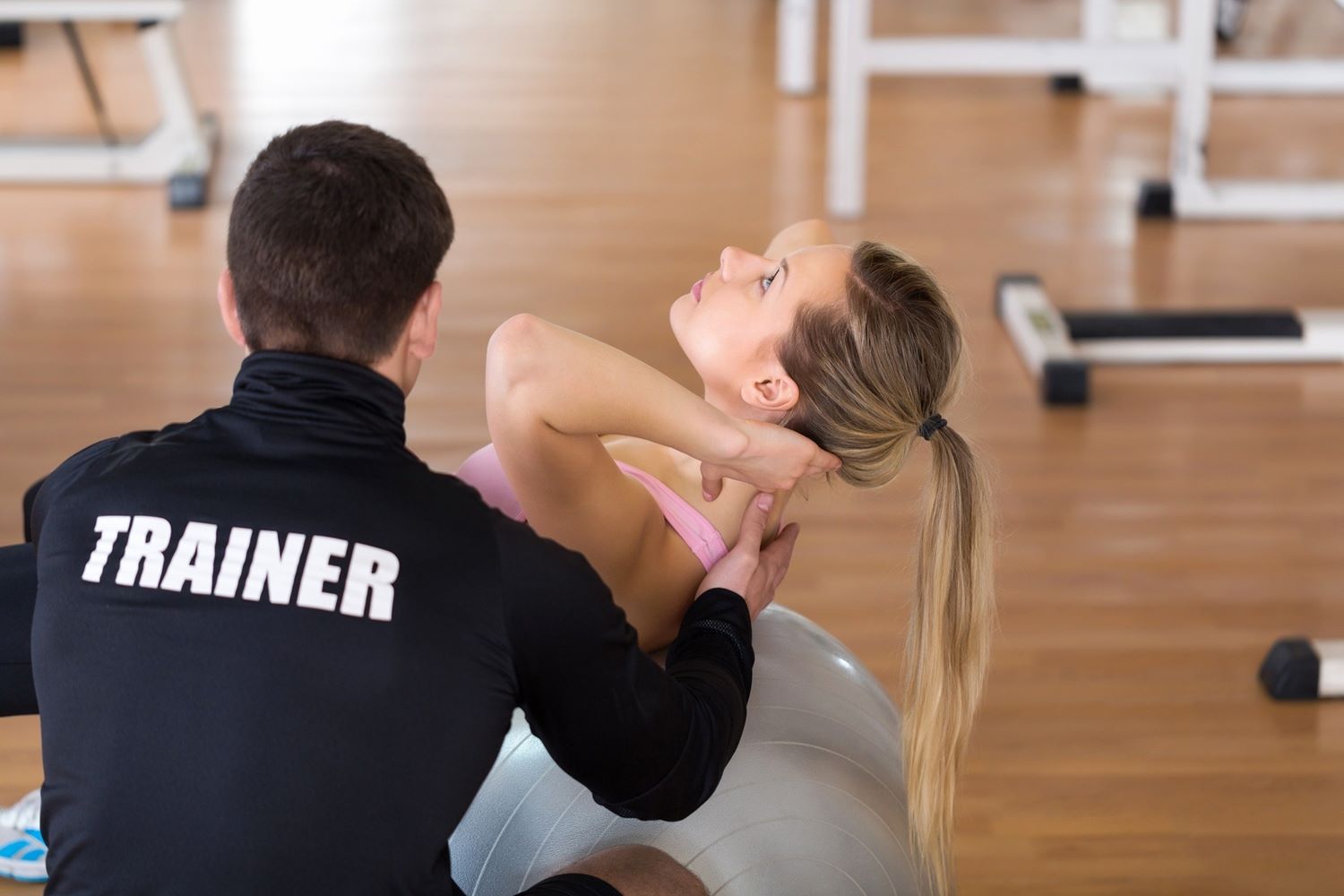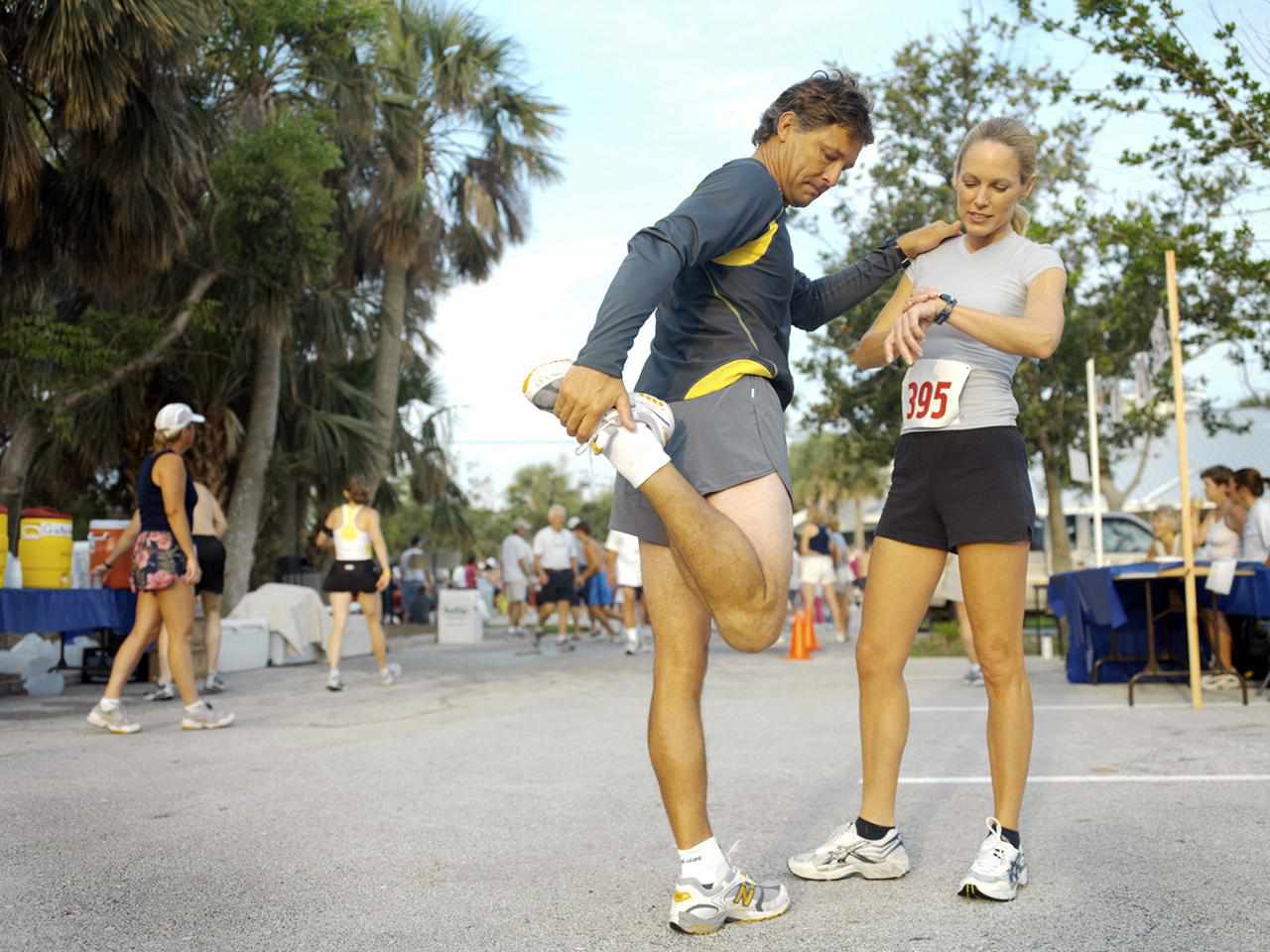

Featured
How To Be A Fitness Trainer
Modified: August 21, 2023
Become a featured fitness trainer and learn how to excel in the industry. Take your skills to the next level with our expert guidance and training programs.
Introduction
Becoming a fitness trainer can be an immensely rewarding career choice. Not only do you have the opportunity to help others achieve their fitness goals, but you also have the chance to inspire and empower them to lead healthier and more active lives. Whether you’re passionate about strength training, cardiovascular fitness, or specialized workouts such as yoga or Pilates, pursuing a career as a fitness trainer allows you to share your knowledge and enthusiasm for physical fitness with others.
In this article, we will guide you through the steps necessary to become a successful fitness trainer. From setting your own fitness goals to obtaining the necessary certifications, gaining practical experience, and continually expanding your knowledge base, we will cover all aspects of starting and advancing in this exciting industry.
Being a fitness trainer requires more than just having a passion for exercise and a desire to help others. It requires a deep understanding of exercise science, nutrition, and effective communication skills. This article aims to provide you with the essential information and guidance to embark on this fulfilling career journey.
Whether you’re just starting out or looking to further your career in fitness training, the following steps will serve as a roadmap to help you achieve your goals. Let’s dive into the first step: determining your fitness goals.
Step 1: Determine your fitness goals
Before embarking on a career as a fitness trainer, it’s crucial to first define and establish your own fitness goals. By understanding your own aspirations and motivations, you’ll be better equipped to help others achieve theirs.
Take some time to reflect on what drives you. Are you passionate about strength and muscle building? Do you enjoy cardio workouts and endurance training? Are you interested in helping individuals with specific needs, such as weight loss or injury rehabilitation?
Once you’ve identified your personal fitness goals, you can begin to specialize in those areas and tailor your training approach accordingly. This will not only help you provide more effective guidance to your clients but will also allow you to stay motivated and connected to your own fitness journey.
It’s important to note that your fitness goals may evolve over time, and that’s perfectly normal. As you gain more experience and knowledge, you may discover new interests or develop a passion for a different aspect of fitness. Remain open-minded and adaptable throughout your career to ensure consistent growth and progression.
Additionally, setting realistic and achievable goals for yourself is essential. While it’s great to have big aspirations, it’s equally important to break them down into smaller, manageable milestones. Celebrating these smaller victories along the way not only boosts your confidence but also serves as a reminder of your progress and commitment to personal growth.
By determining your own fitness goals, you lay the foundation for a successful career as a fitness trainer. With a clear direction and sense of purpose, you can now move on to the next step: obtaining the necessary certifications and education.
Step 2: Obtain the necessary certifications and education
Once you have established your fitness goals, it’s time to focus on obtaining the necessary certifications and education to become a qualified fitness trainer.
One of the most recognized certifications in the fitness industry is the National Academy of Sports Medicine (NASM) Certified Personal Trainer (CPT) certification. This certification provides a solid foundation in exercise science, anatomy, physiology, and program design. It is highly respected and widely recognized by employers and clients alike.
In addition to the NASM-CPT, there are several other reputable certifications available, such as the American Council on Exercise (ACE) certification and the International Sports Sciences Association (ISSA) certification. Research and compare different certifications to find the one that best aligns with your career goals and interests.
Once you’ve decided on a certification, it’s time to start studying. Many organizations offer study materials and resources to help you prepare for the certification exam. This may include textbooks, online courses, practice exams, and even workshops or seminars. Take advantage of these resources to ensure you have a solid understanding of the material.
In addition to certifications, it’s also beneficial to pursue further education in exercise science or a related field. This can be done through a degree program or by taking specialized courses and workshops. Gaining a deep understanding of human anatomy, physiology, and biomechanics will not only enhance your knowledge as a fitness trainer but will also allow you to provide evidence-based training recommendations to your clients.
Remember that obtaining certifications and education is an ongoing process. The fitness industry is constantly evolving, and it’s essential to stay up to date with the latest research and trends. Continual professional development through workshops, seminars, and conferences will ensure that you are always offering the most current and effective training techniques to your clients.
By obtaining the necessary certifications and education, you demonstrate your commitment to your craft and gain the credentials needed to launch your career as a fitness trainer. With your qualifications in place, it’s time to gain practical experience through internships or volunteer work, which we will explore in the next step.
Step 3: Gain experience through internships or volunteer work
While certifications and education provide you with the knowledge and credentials to become a fitness trainer, gaining practical experience is equally important. Internships and volunteer work can provide invaluable hands-on experience and help you develop the necessary skills and confidence to work with clients.
Internships offer the opportunity to work alongside experienced trainers in fitness facilities or sports performance centers. This allows you to observe and learn from professionals who have been in the field for a while. Internships also provide the chance to build professional relationships and network with industry experts, which can lead to future job opportunities.
Another option to gain experience is through volunteer work. Many community centers, nonprofit organizations, and sports clubs offer fitness programs where you can volunteer your time and skills. This not only allows you to work with a diverse range of individuals but also gives you the chance to make a positive impact on your community through fitness education and training.
During internships or volunteer work, take every opportunity to apply your knowledge and practice your skills. This may involve designing workouts, coaching clients, and providing guidance on proper exercise technique. Embrace feedback and actively seek to improve and refine your abilities.
While internships and volunteer work may not always offer financial compensation, the experience and skills you gain are invaluable and will set you apart when seeking employment. Potential employers value hands-on experience and see it as proof of your dedication and commitment to the field.
In addition to internships and volunteer work, you can also explore opportunities to work with specific populations or specialized fitness programs. This could include working with athletes, older adults, individuals with medical conditions, or even conducting group fitness classes.
By gaining experience through internships or volunteer work, you not only enhance your practical skills as a fitness trainer, but you also gain valuable real-world insights that will set you up for success in the industry. The next step is to build a strong knowledge base in exercise science and nutrition.
Step 4: Build a strong knowledge base in exercise science and nutrition
As a fitness trainer, having a strong understanding of exercise science and nutrition is essential for providing effective and safe guidance to your clients. Building a solid knowledge base in these areas will enhance your credibility as a professional and enable you to create customized fitness plans tailored to individual needs and goals.
Start by delving into exercise science, which encompasses the study of human movement, physiology, and biomechanics. Familiarize yourself with concepts such as muscle anatomy, energy systems, and how the body adapts to exercise. Understanding these fundamentals will enable you to design well-rounded and effective workout programs for your clients.
Additionally, learning about different training methodologies and techniques will expand your toolkit as a fitness trainer. This could include high-intensity interval training (HIIT), functional training, resistance training, and more. Stay up to date with the latest research and trends in the field to offer cutting-edge training methods to your clients.
Equally important is having a sound knowledge of nutrition and its role in fitness and overall health. Understand the principles of macronutrients (carbohydrates, proteins, and fats) and micronutrients (vitamins and minerals). Learn how to educate your clients on proper nutrition to support their fitness goals and overall well-being.
Keep in mind that while you can provide general nutrition guidance, it is essential to refer clients to a registered dietitian or nutritionist for specialized dietary advice or medical conditions. Collaborating with other healthcare professionals ensures that your clients receive comprehensive and personalized care.
Continuously educate yourself by reading reputable books, scientific journals, and taking courses or workshops related to exercise science and nutrition. There are many online resources and organizations that offer certified nutrition courses specifically designed for fitness professionals.
By building a strong knowledge base in exercise science and nutrition, you become a trusted resource for your clients. You can provide evidence-based information and design comprehensive training and nutrition programs that align with their specific goals and needs. The next step is to develop effective communication and interpersonal skills.
Step 5: Develop effective communication and interpersonal skills
Being a successful fitness trainer is not just about having knowledge and expertise in exercise and nutrition. It also requires strong communication and interpersonal skills to effectively connect with and motivate your clients.
Developing effective communication skills involves actively listening to your clients, understanding their needs, and effectively conveying information in a clear and concise manner. This includes explaining exercise techniques, demonstrating proper form, and providing feedback and encouragement.
Remember that each client is unique, and their motivations, goals, and learning styles may vary. Adapt your communication approach accordingly to ensure they feel understood and supported throughout their fitness journey. This may involve using visual demonstrations, providing written instructions, or utilizing technology such as fitness tracking apps or online platforms.
Interpersonal skills are equally important in building strong relationships with your clients. Being empathetic, patient, and approachable creates a safe and supportive environment. Take the time to establish rapport, maintain professionalism, and treat your clients with respect, regardless of their fitness level or background.
As a fitness trainer, you may encounter clients who face challenges or have limitations. Being compassionate and understanding will help you adapt workouts and modify exercises to meet their needs while keeping them motivated and engaged. Your ability to connect with clients on a personal level can greatly influence their adherence to their fitness plans and overall success.
Continuous improvement of your communication and interpersonal skills is essential. Seek feedback from your clients and colleagues, and be open to constructive criticism. Additionally, consider attending workshops or seminars that focus on communication techniques or interpersonal dynamics.
Remember, effective communication and interpersonal skills not only facilitate client-trainer relationships, but they also contribute to your professional growth and business success. Clients who have positive experiences and feel understood and supported are more likely to refer others to you and continue working with you in the long term.
Now that you have honed your communication skills, it’s time to put them into practice by creating customized fitness plans for your clients in the next step.
Step 6: Create customized fitness plans for clients
Creating customized fitness plans is a crucial aspect of being a fitness trainer. Every client is unique, with different goals, fitness levels, and limitations. Tailoring individualized programs ensures that your clients receive the most effective and safe training experience.
Start by conducting a comprehensive assessment of your client’s current fitness level and health status. This may include measurements such as body composition, flexibility tests, cardiovascular fitness assessments, and strength evaluations. Gathering this information will help you identify areas of strength and weakness, as well as any potential limitations or contraindications.
Once you have a clear understanding of your client’s goals and capabilities, you can begin designing their customized fitness plan. Consider their specific objectives, whether it’s weight loss, muscle gain, improving cardiovascular endurance, or enhancing overall fitness. Incorporate exercises and training methods that align with these goals while taking into account their preferences and interests.
Variety is key when creating fitness plans. Include a combination of cardiorespiratory exercises, strength training, flexibility, and balance exercises to provide a well-rounded approach. Consider incorporating different types of equipment or training modalities, such as free weights, resistance machines, bodyweight exercises, or functional training tools.
It’s important to progress clients gradually and safely, especially if they are new to exercise or have specific limitations. Start with appropriate intensity and gradually increase the challenge as they become more comfortable and capable. Regularly reassess their progress and adjust their program as needed to ensure continuous improvement.
Remember to educate your clients on proper exercise technique and the importance of rest and recovery. Effective communication plays a crucial role here, as you need to clearly explain how to perform exercises with correct form and ensure they understand the rationale behind program design.
Finally, be flexible and adaptable as you work with your clients. As their goals change or they encounter setbacks, adjust their fitness plans accordingly. It’s essential to continuously monitor their progress and provide ongoing support, motivation, and guidance.
Creating customized fitness plans allows you to address the unique needs and goals of each client while providing them with structure and accountability. By doing so, you significantly enhance their chances of success and ensure a positive training experience.
In the next step, we will explore how to stay updated with the latest fitness industry trends and research.
Step 7: Stay updated with the latest fitness industry trends and research
As a fitness trainer, it’s essential to stay up to date with the latest trends and research in the ever-evolving fitness industry. Continual learning and professional development not only enhance your knowledge and skills but also enable you to provide the best possible guidance to your clients.
One way to stay informed is by subscribing to reputable fitness publications, journals, and newsletters. These sources often feature articles on the latest research findings, new training techniques, and emerging trends in the industry. By regularly reading and staying informed, you can incorporate evidence-based practices into your training programs.
Attending industry conferences, workshops, and seminars is another valuable way to stay updated. These events provide opportunities to learn from industry experts, network with other professionals, and gain insights into the latest advancements in fitness. Many conferences also offer continuing education credits that can contribute to maintaining your certifications.
Engaging in online forums and discussion platforms dedicated to fitness can also keep you in the loop. Connecting with fellow fitness professionals allows you to share ideas, ask questions, and keep abreast of industry trends. Additionally, following influential fitness experts and organizations on social media can provide a steady stream of information and inspiration.
Research studies and scientific articles are the backbone of evidence-based practice. Regularly reviewing the latest research allows you to enhance your understanding of exercise physiology, nutrition, and other relevant topics. This knowledge helps you make informed decisions and provide accurate information to your clients.
Collaborating with other healthcare professionals is another effective way to stay updated. Building relationships with registered dietitians, physical therapists, and other specialists can provide valuable insights and facilitate referrals when necessary. Interdisciplinary collaboration ensures comprehensive care for your clients.
Finally, never underestimate the value of hands-on experience and learning from your clients. Each client brings their unique perspective and challenges, which can broaden your knowledge and skill set. Actively listen to your clients, gather feedback, and adapt your approach based on their experiences and results.
By staying updated with the latest fitness industry trends and research, you show your dedication to providing the most effective and up-to-date guidance to your clients. This commitment to ongoing learning sets you apart as a knowledgeable and trusted fitness professional.
In the final step, we will discuss the importance of continuous improvement and professional development.
Step 8: Continuously improve and expand your skills through professional development
Achieving success as a fitness trainer requires a commitment to continuous improvement and professional development. The fitness industry is constantly evolving, and staying ahead of the curve is essential for delivering the best possible service to your clients and maintaining a competitive edge.
Professional development can take many forms, from attending workshops, seminars, and conferences to pursuing advanced certifications and specialized training programs. These opportunities provide valuable insights into new training techniques, exercise modalities, and emerging research. They also offer a chance to connect with industry experts and like-minded professionals, facilitating the sharing of knowledge and experiences.
Continuing education courses and certifications allow you to deepen your knowledge in specific areas of interest. This could include advanced strength and conditioning, sports nutrition, group fitness instruction, or specialized training for diverse populations. By expanding your skills and expertise, you can attract a wider range of clients and offer tailored services to meet their unique needs.
Mentorship and peer support are also essential components of professional development. Seeking guidance from experienced fitness professionals provides an opportunity to learn from their expertise, gaining valuable insights and practical tips. Additionally, connecting with peers allows for the exchange of ideas and experiences, fostering mutual growth and development.
Another effective way to continuously improve and expand your skills is through self-study. Engage in independent research, read books and articles relevant to your field, and explore online courses. Creating a habit of lifelong learning ensures that you are constantly challenging yourself and keeping up with the latest industry trends.
Reflecting upon your own practice and seeking feedback from clients and colleagues is a valuable self-improvement tool. Regularly evaluate your strengths and areas for growth, and actively seek ways to enhance your performance. Embrace feedback as an opportunity for growth and make adjustments when necessary.
It’s important to note that professional development goes beyond technical skills. Building business acumen, marketing strategies, and client management skills are equally important for growing your fitness training career. Investing time and effort in developing these areas will help you create a solid foundation for a successful and sustainable business.
Remember, professional development is an ongoing journey. Embrace a growth mindset and always seek to expand your knowledge, challenge yourself, and adapt to new trends and advancements in the fitness industry. By continuously improving and expanding your skills, you position yourself as a highly sought-after fitness professional.
As a fitness trainer, following these steps will provide you with a comprehensive roadmap towards success in the field. By determining your fitness goals, obtaining certifications, gaining experience, building knowledge, developing communication skills, creating customized plans, staying updated, and continuously improving, you will establish yourself as a trusted and skilled fitness trainer.
Conclusion
Becoming a fitness trainer is a rewarding and fulfilling career choice that allows you to make a positive impact on the lives of others. By following these steps, you can pave your way to success in the fitness industry and become a trusted and knowledgeable professional.
Start by determining your own fitness goals and aspirations. This self-reflection will guide you in specializing and tailoring your training approach to meet the needs of your future clients. Obtain the necessary certifications, education, and practical experience to build a strong foundation in exercise science and nutrition.
Develop effective communication and interpersonal skills, as these are crucial for establishing rapport and trust with your clients. Creating customized fitness plans based on individual goals and abilities shows your dedication to their success and makes your services more valuable.
Stay updated with the latest industry trends and research to provide evidence-based guidance and continually enhance your knowledge. Never stop learning and seek opportunities for professional development, whether through workshops, conferences, self-study, or mentorship.
Remember, being a fitness trainer is not just about providing workouts and nutrition advice. It’s about genuinely caring for your clients and helping them achieve their goals in a safe and sustainable manner. Continuously improving your skills and adapting to the evolving fitness landscape will enable you to offer the highest quality of service.
As you embark on your journey as a fitness trainer, embrace the challenges and successes along the way. Stay passionate, stay dedicated, and continue to grow both personally and professionally. By doing so, you will not only excel in your own career but also inspire and empower others to live healthier, happier lives.








